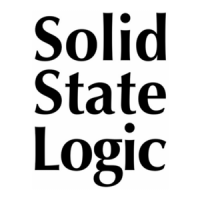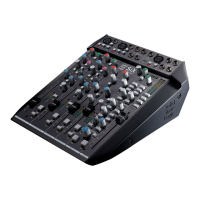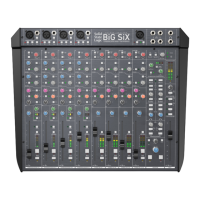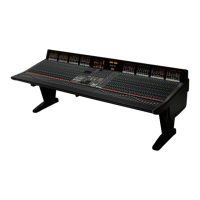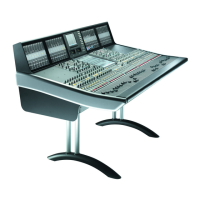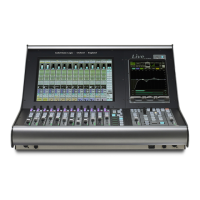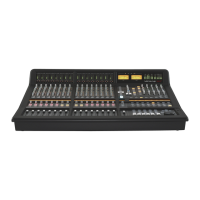The First Mix Pass
Back to your first pass!
Before you put the Desk into play, note that faders can be selected to Manual (no LEDs
lit) by pressing individual fader status buttons (or using the FSM button on the front
panel to toggle all faders). Manual status (for faders only) enables dynamic moves to
be made without writing those moves to the mix pass.
Once the mix has started, pressing the status button on faders in Absolute will have no
effect. If you press the button on a fader in Manual, it will switch to Absolute.
When a fader in Manual is switched to Absolute after the start of a mix, its current
level will be written back to the start of the mix. Starting a mix with all faders in
Manual, and with Overwrite selected, provides a great way to build up a basic mix –
simply pop faders into Absolute when you are happy with the level. Note that when a
fader is switched from Manual to write, it will always be forced into Absolute,
whether in a new mix or in a subsequent pass, even if USE TRIM (see Page 5-31) is
selected.
Now press PLAY to move forward, and begin writing mix information. The fader
moves (and data written with respect to any other automated objects) will be held in
RAM. An indication of the memory currently available is displayed in the Free Mem
box below the Mix Pass list.
At any time you can stop mixing, rewind the system, and this will create a mix pass.
As soon as you rewind, all automated objects switch to Replay (known as Play for
switches – see Page 5-35). If you have selected Overwrite as the automation mode for
faders and cuts, all your mix moves up to the first rollback point will have been saved
in RAM and will play out as you move forward again. The fader levels and cut states
at the point of rollback will be written to 23:59:59:24(:29). The mix pass start and end
times will be shown in the Fr: and To: boxes above the Mix Pass list.
If you decide that the movements in your first pass are not worth keeping, hit Discard
before you roll back; the faders will remain in Absolute. If you then roll back (the faders
switch to Replay), hit the JOIN button (see Page 5-19) to get them back into Absolute
at the right levels. Alternatively use the ‘Pre Enable’ snapshot as described on Page
5-77.
You can, of course, rollback as many times as you like, as you work your way through
the track. Remember though, that each time you rollback (unless you simply play back
and do not touch any controls), a new mix pass will be created. If you wish to play
back from the start of the pass, simply either hit the appropriate TC1-5 button, or stab
in the Fr: box, to locate the system to that point.
As you play forward again and reach the previous rollback point, any faders and cuts
that have not been selected to a write status will continue to play the previous mix
levels/states. Simply move a fader or press a switch to start writing new information.
When you reach the final rollback point, ie. the mix To: time, all faders will drop into
Absolute.
The Mix System
5-29
20.8.96
